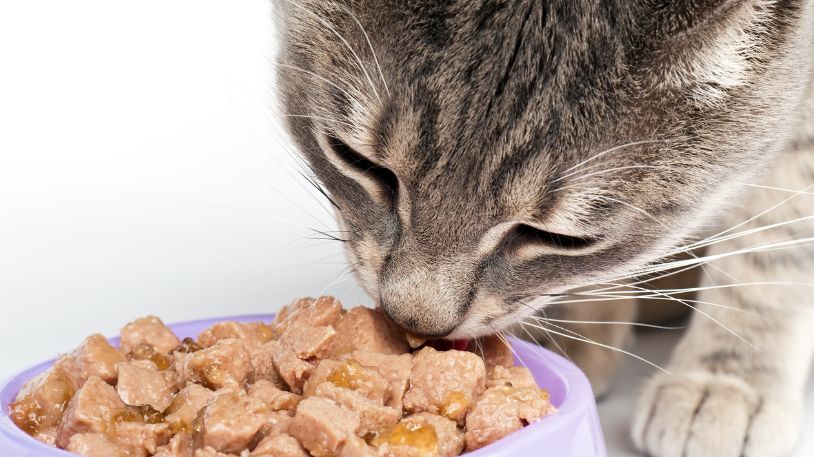How Often Cats Should Eat
As cat owners, we want to ensure that our feline friends are happy, healthy, and well-fed. Feeding is an important aspect of cat care, and knowing how often to feed your cat is crucial.
There are different feeding methods that cat owners can use, such as free-feeding, scheduled meals, or a combination of both. However, to determine the best feeding method for your cat, there are several factors to consider.
Factors to Consider in Feeding Your Cat

Feeding your cat is an essential aspect of pet care that directly affects their overall health and wellbeing. As a cat owner, it's crucial to understand that feeding your cat requires more than just filling up their bowl with food. You need to consider various factors, such as their age, activity level, and health condition, to ensure they receive the right nutrition. This article will discuss the critical factors you need to consider when feeding your cat to keep them healthy, happy, and thriving.
Age
Your cat's age is an essential factor to consider when deciding on a feeding routine. Kittens require more frequent meals than adult or senior cats because they have higher energy and nutrient requirements for growth and development. Typically, kittens should be fed three to four times a day until they reach six months of age.
Weight and Body Condition Score
A cat's weight and body condition score (BCS) can help determine the amount and frequency of food they should receive. Overfeeding or underfeeding can lead to obesity or malnourishment, respectively, both of which can have adverse effects on a cat's health.
Health Conditions
Cats with certain health conditions, such as diabetes or kidney disease, require special diets and feeding schedules. Consulting with a veterinarian can help determine the best feeding plan for cats with specific health needs.
Lifestyle and Activity Level
Cats that are more active or have a higher metabolism may require more frequent meals or larger portions than less active cats.
How Much Should You Feed Your Cat?
Feeding your cat the appropriate amount of food is crucial to maintaining their health and wellbeing. However, determining how much to feed your cat can be a challenging task, as there is no one-size-fits-all approach. Factors such as their age, weight, activity level, and overall health condition must be taken into account to determine the appropriate portion sizes for your feline friend. In this article, we will explore the essential considerations you need to keep in mind to determine the right amount of food to feed your cat. We'll also provide some tips on how to monitor your cat's weight and adjust their diet accordingly to ensure they maintain a healthy weight.
Measuring Food Portions
Measuring your cat's food portions is essential to ensure they receive the right amount of nutrients and calories. Using a kitchen scale or measuring cup can help you determine the proper amount of food to give your cat.
Understanding Calorie Requirements
The number of calories a cat requires depends on several factors, including their age, weight, activity level, and health status. Guidelines for feeding kittens, adult cats, and senior cats can help cat owners determine the appropriate amount of calories their cat needs.
Guidelines for Feeding Kittens, Adult Cats, and Senior Cats: Kittens require more calories and nutrients than adult or senior cats because they are growing and developing. Adult cats require a balanced diet to maintain their weight and health, while senior cats may require special diets due to age-related changes in their bodies.
How Often Should You Feed Your Cat?

Determining the appropriate feeding frequency for your cat is crucial to their overall health and wellbeing. Feeding your cat too often or too little can lead to weight problems and other health issues. While there is no one-size-fits-all answer to how often you should feed your cat, there are some general guidelines you can follow based on their age, weight, and overall health condition. In this article, we'll discuss how often you should feed your cat based on their life stage and provide you with some essential tips on feeding frequency.
Free Feeding vs. Scheduled Meals:
Feeding your cat is an essential aspect of pet care, and choosing between free feeding and scheduled meals is an important decision. While free feeding can be convenient, it can lead to overeating and weight problems. Scheduled meals can help regulate your cat's food intake, but they may not work for every cat owner. Ultimately, the best feeding method will depend on your cat's individual needs and your lifestyle.
Free Feeding
Free feeding allows cats to eat as much or as little as they want throughout the day, while scheduled meals provide set times for feeding. Both methods have their advantages and disadvantages, and cat owners should consider their cat's specific needs when deciding which method to use.
Free feeding is a convenient option for many cat owners as it doesn't require specific meal times. It's particularly useful if you have a busy schedule or if you have multiple cats in your household who may need to eat at different times. However, free feeding can lead to overeating and obesity if your cat lacks self-control. It can also make it challenging to monitor your cat's food intake, which can make it difficult to identify potential health issues related to their diet.
Scheduled Meals
Scheduled meals involve feeding your cat a set amount of food at specific times during the day. This method can help prevent overeating and obesity, as it limits the amount of food your cat consumes. It also allows you to monitor your cat's food intake, which can make it easier to identify any issues related to their diet. However, scheduled meals can be less convenient than free feeding, particularly if you have a busy schedule.
Frequency of Feeding
The frequency of feeding for the different life stages of cats is an important consideration when it comes to providing your feline friend with optimal nutrition and health. As a general rule, kittens require more frequent meals than adult or senior cats. While adult cats typically require one to two meals per day, senior cats may benefit from smaller, more frequent meals.
When feeding multiple cats, it's essential to provide separate feeding areas to prevent competition and potential food aggression. Additionally, ensuring each cat receives the appropriate amount of food can prevent overfeeding or underfeeding.
Tips for Healthy Cat Feeding

Feeding your cat a healthy, balanced diet is essential for their overall health and wellbeing. However, with so many different cat foods available, it can be challenging to determine the best options for your feline friend. In this article, we'll provide you with some essential tips for healthy cat feeding, including the importance of a balanced diet, choosing the right type of food, portion control, and monitoring your cat's weight and health. By following these tips, you can help ensure that your cat receives the nutrients they need to live a happy and healthy life.
Choose the right food: Selecting high-quality cat food is crucial to ensure that your cat receives the nutrients they need to thrive. This includes meals and treats for cats. Examples of these quality right food are beef heart treats, pork liver treats and Chicken Breast Jerky For Cats that are surely 100% human-grade and have no added preservatives.
Look for cat food that has a high-quality protein source, limited fillers, and meets the nutritional requirements established by the Association of American Feed Control Officials (AAFCO).
Monitor weight and body condition score: Regularly monitoring your cat's weight and body condition score can help detect potential health issues early on, such as obesity or malnutrition.
Provide fresh water: Access to fresh, clean water is essential for maintaining a cat's health and preventing dehydration. Ensure your cat has access to clean water at all times.
Stay away from table scraps and toxic foods: Avoid feeding your cat table scraps, as these can lead to obesity, digestive issues, or even toxicities. Additionally, avoid feeding your cat chocolate, caffeine, onions, garlic, grapes, and raisins, as these foods are toxic to cats.
Conclusion
Feeding your cat the right amount and type of food is essential for maintaining their health and well-being. Factors such as age, weight, health status, and activity level can help determine the appropriate feeding routine for your cat. Measuring food portions, understanding calorie requirements, and choosing the right food can all help ensure your cat receives the nutrients they need to thrive. Remember to consult with your veterinarian if you have any concerns about your cat feeding routine.


